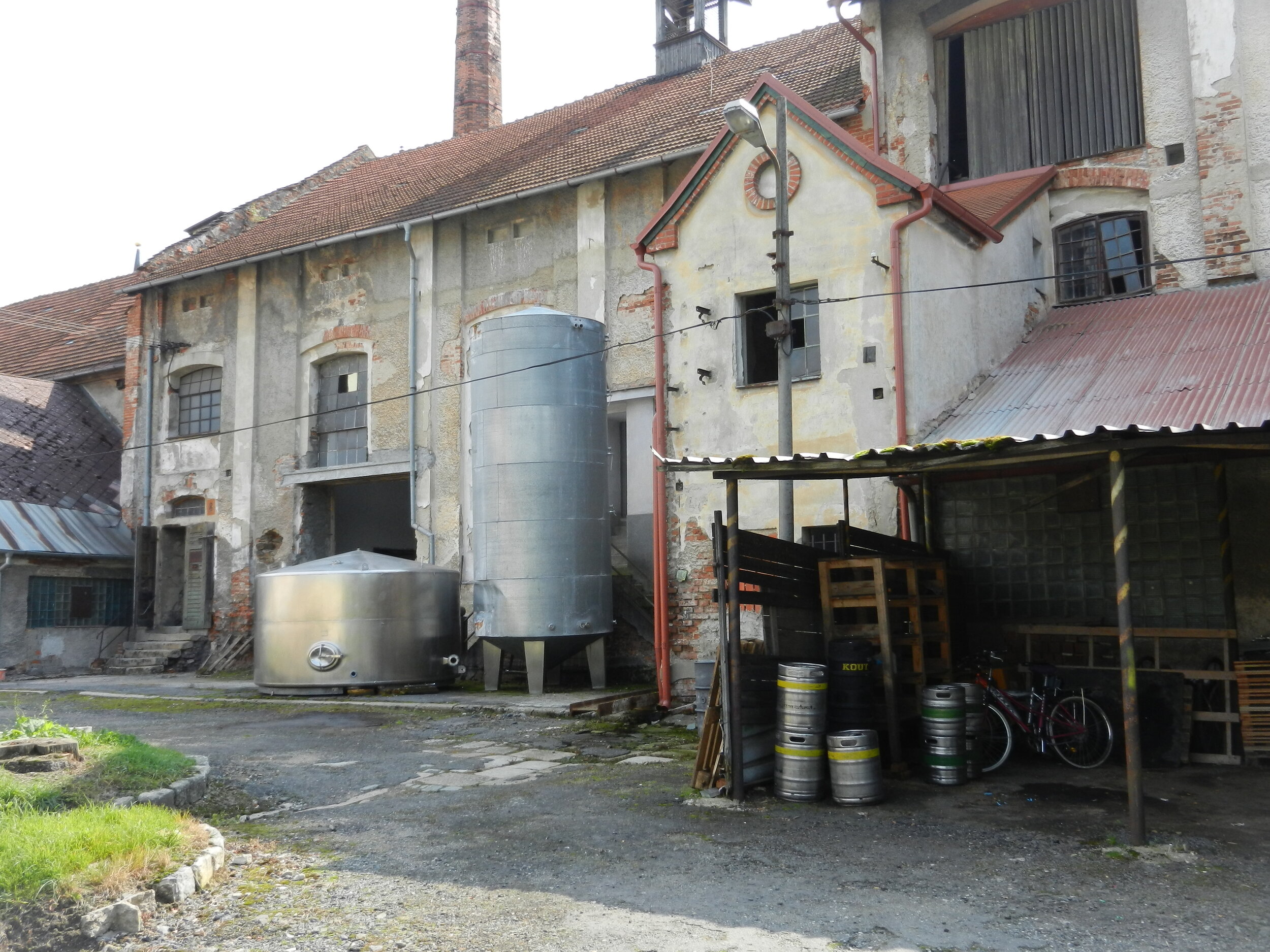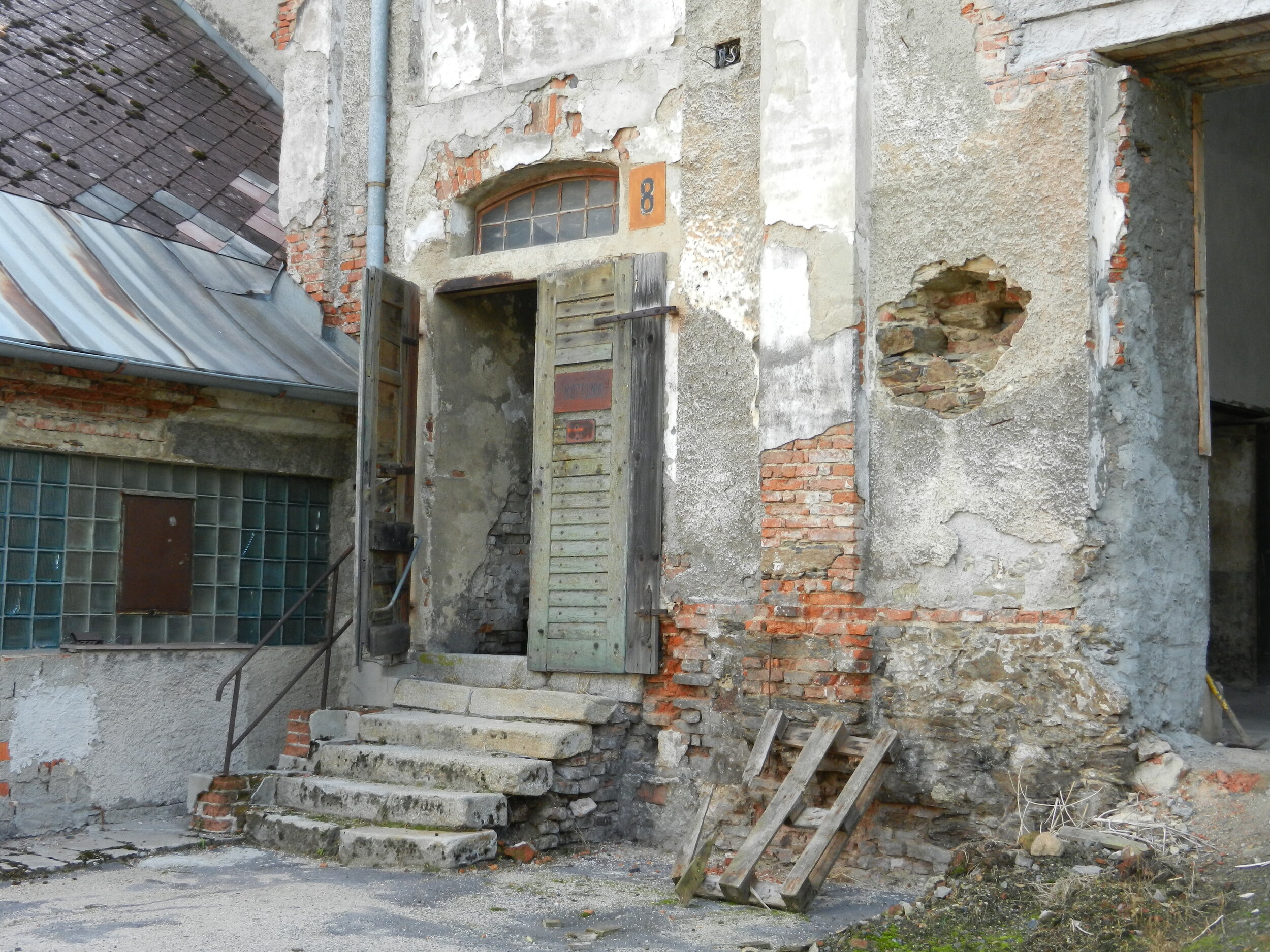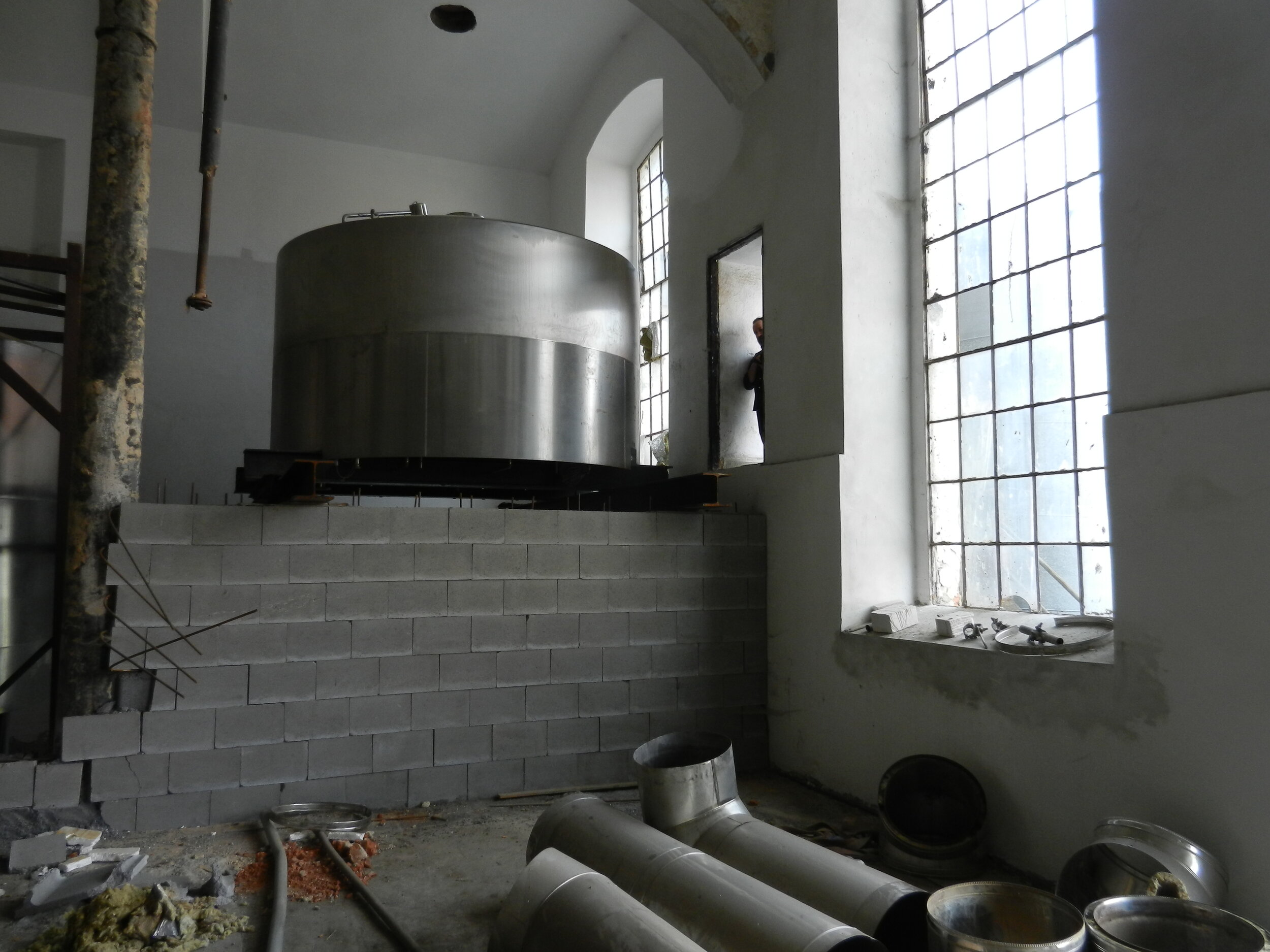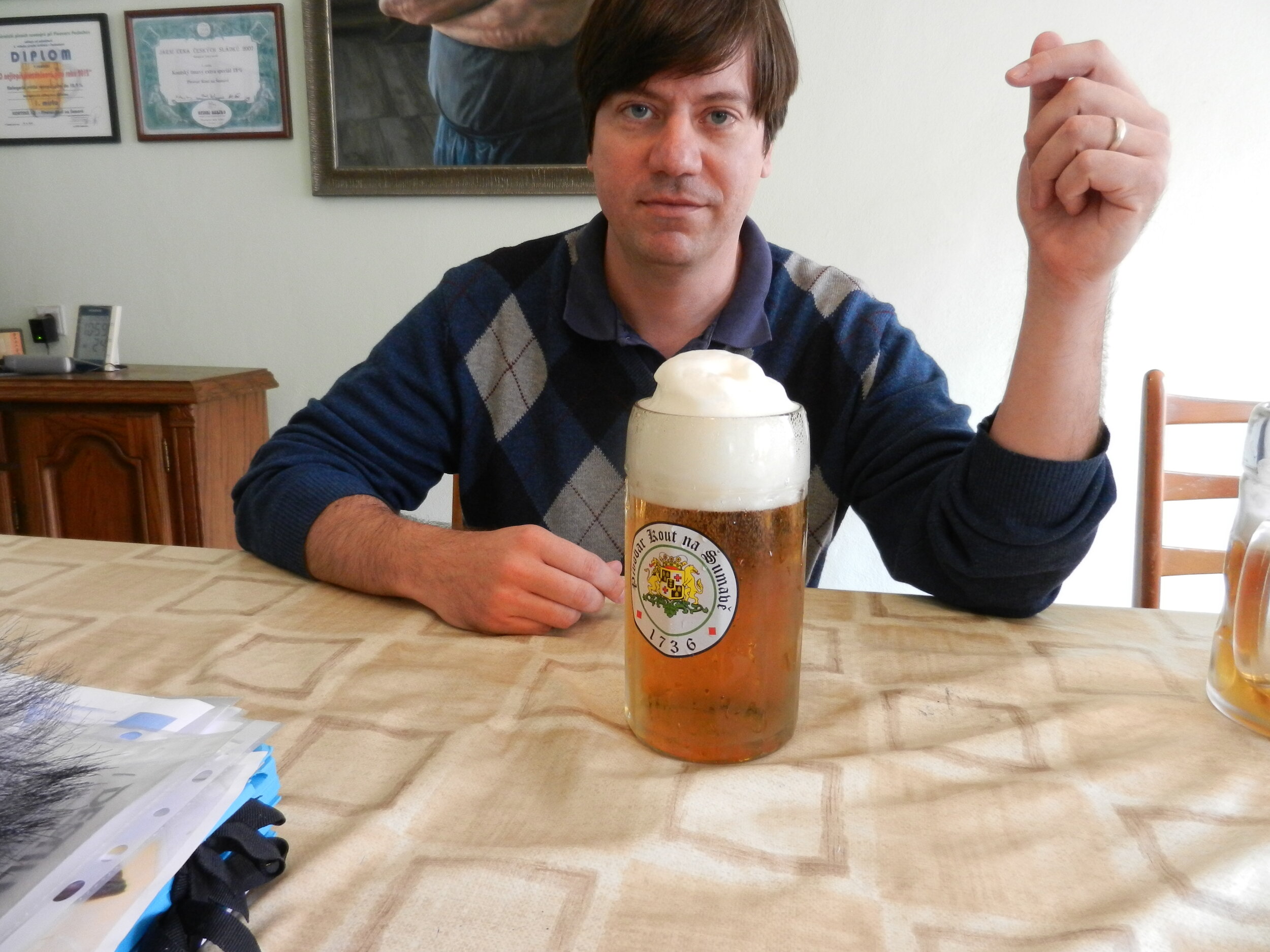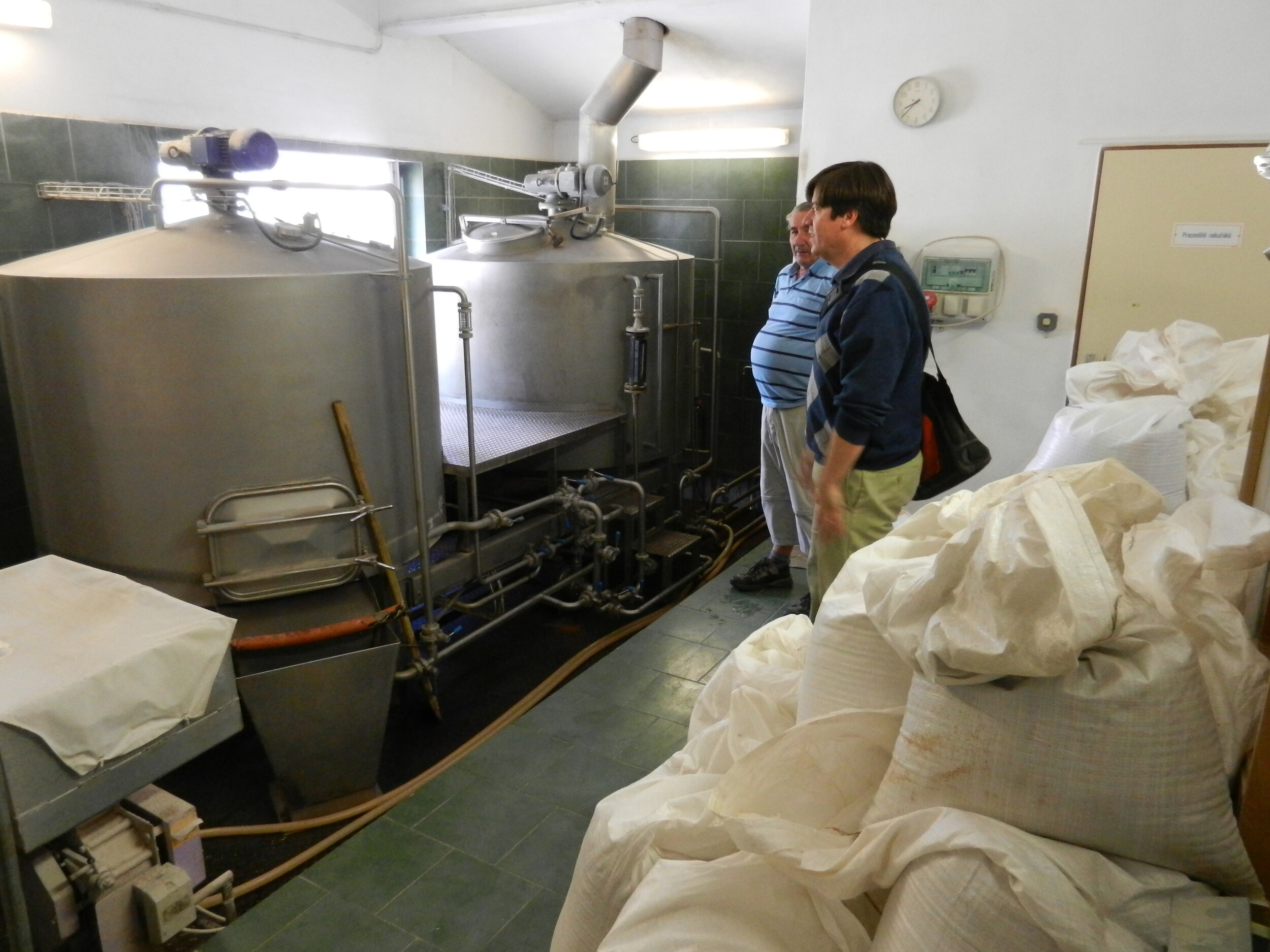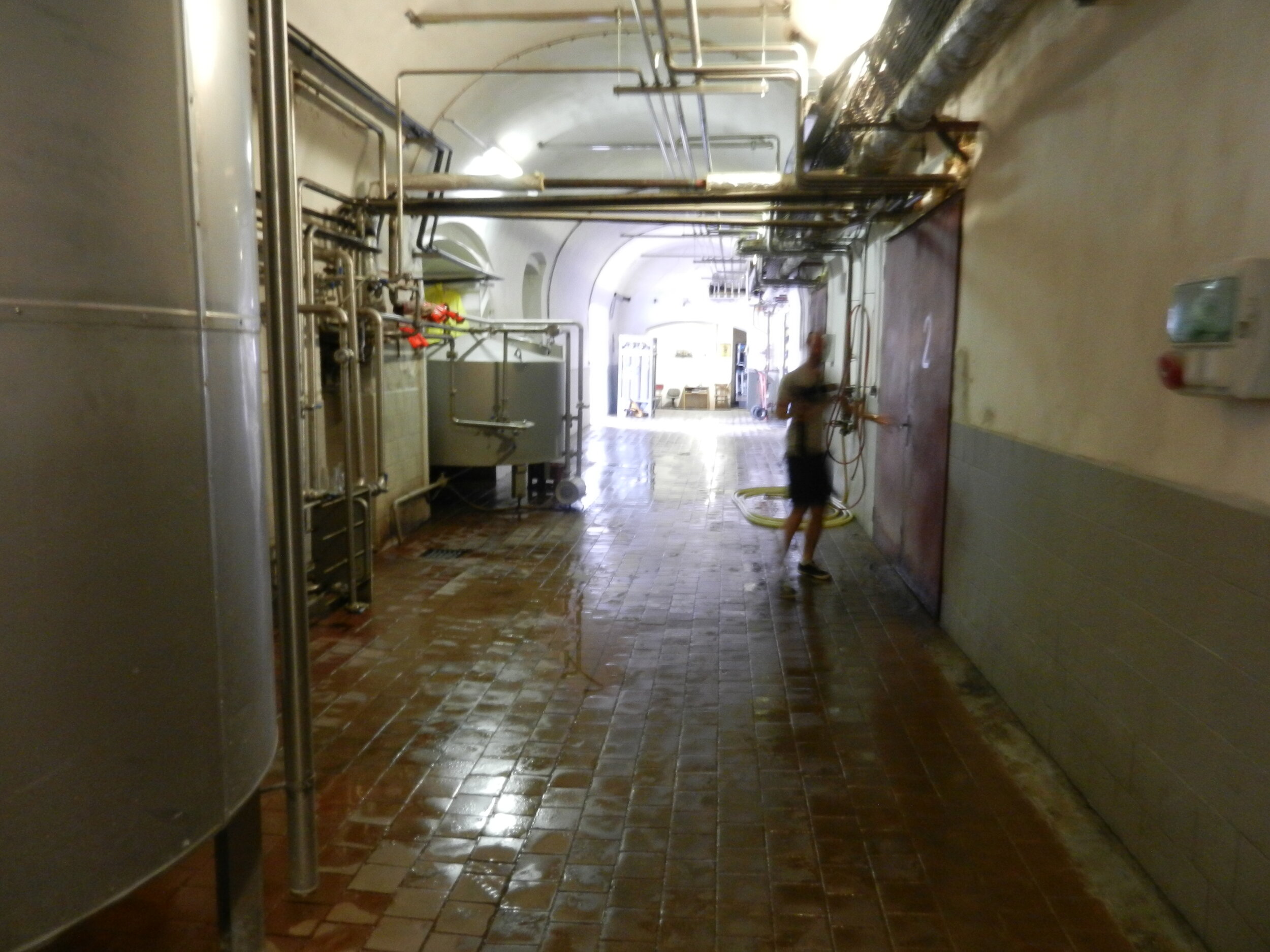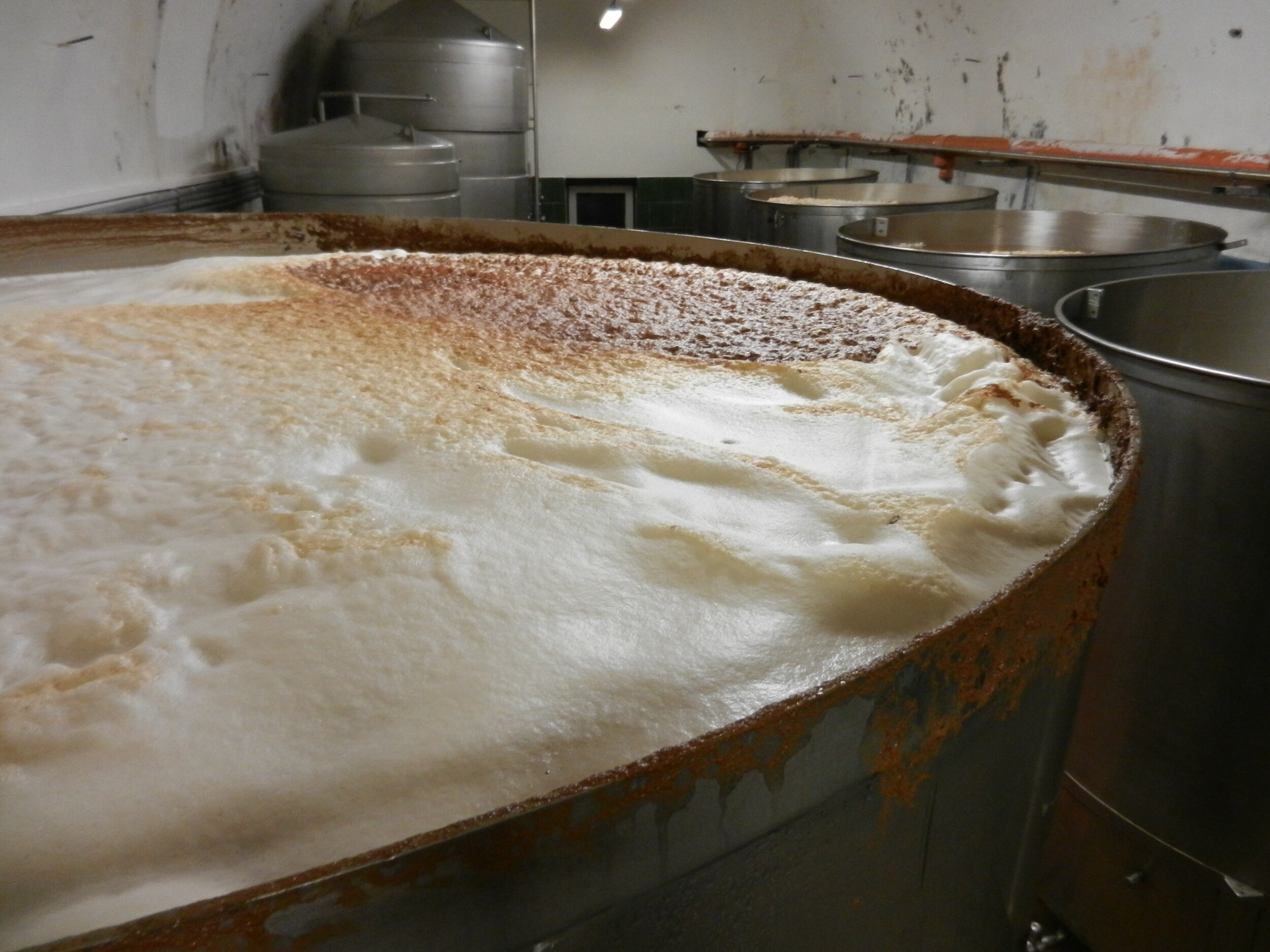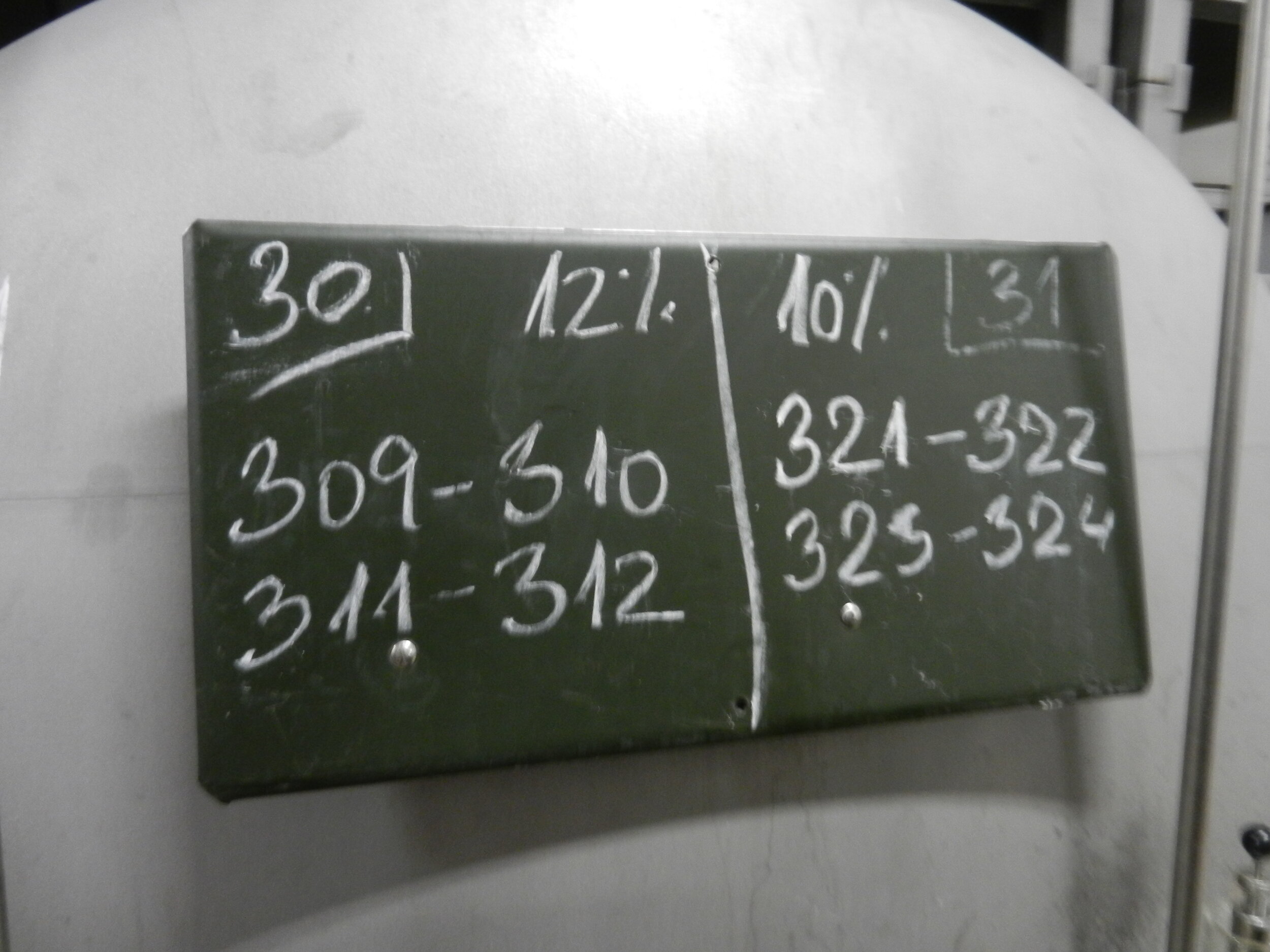Kout Out
Note: Post updated below with a bunch of new photos.
This is incredibly depressing news. One of the world’s most interesting breweries has apparently shuttered its doors. Again. Czechia’s Pivovar Kout na Šumavě has a lineage going back a long time (how far is I think the matter of some dispute.) In any case, its heyday was a hundred years ago, after which the brewery fell into ruins. In 2002, Ján Skala bought the ruins and later brought in veteran brewer Bohuslav Hlavsa to start remaking the beer. The brewery was a trip. It was still a ruins, in the midst of which some of the buildings had been restored into working conditions. It had a real quality of the Soviet cities that have been abandoned for one reason or another over the decades. Hlavsa made some very interesting beer, which I’ll mention in a moment, but first, the news (as rendered into English by Google). It started with an untimely death.
“Eighteen years after the entrepreneur Ján Skala bought the ruined ruin and then started brewing once renowned lagers there, silence reigns again. A major hitch came in early 2017 when Ján Skala died and divided the property between his last and penultimate partner - [Gabriela] Hodečková and [Jana] Skalová.” Unfortunately, he didn’t divide it evenly, and Hodečková, who owned 51%, let bills mount and failed to keep it a viable business. (It was, at the time of its closure, a sizable, exporting concern. Trouble surfaced in 2018, and a new manager was unable to reverse fortunes.
Evan Rail (L) and Bohuslav Hlavsa.
The death isn’t final (and given the history of this place, who knows?), but all signs point to this being the end of a chapter at a minimum.
The Beer
Hlavsa made very unusual beer. The standards were 10° and 12° svetle pivos. They also made two strong dark lagers. The regular lagers were extremely thick and stiff in hopping, effectively the most exaggerated versions of Czech beer out there. Hlavsa, who’d started at Pilsner Urquell in the 1960s (if memory serves), did standard triple decoction, but also used a dash of caramel malt for color, which really blew my mind when I heard about it back on a visit in 2014 organized by Mark Dredge. It was quite a tour, including Good Beer Hunting’s Michael Kiser and Jonny Garrett, who was not yet too deeply into his YouTube project the Craft Beer Channel. (Here’s a vid he did of Kout 12.)
Evan Rail was translating, and he’d been sitting on that info for years. I have a sense he sort of guided me to ask about it because it was so unusual. From there the beer got a two-hour boil and three hop additions. Hlavsa used first wort hopping, as is widely practiced, so the first addition was in the kettle when the boil started. He did two more additions at 45-minute intervals, so the last addition was a half hour before flameout. He used tons of Saaz hops, and you could really tell how long-boiling gave an unusual stiffness to the bittering. From there he used open fermentation and very long lagering times. All of this, he told us, was purely traditional brewing like he was taught decades ago. Needless to say, a lot of that is no longer standard practice.
Hlavsa pouring out some of the dark lager.
It hurts my heart to think I won’t get to go back and see if they ever restored any more of the buildings. If you’re interested in a wonderful piece of writing about the brewery, I highly recommend Evan’s The Brewery in the Bohemian Forest, a short e-book.
RIP
